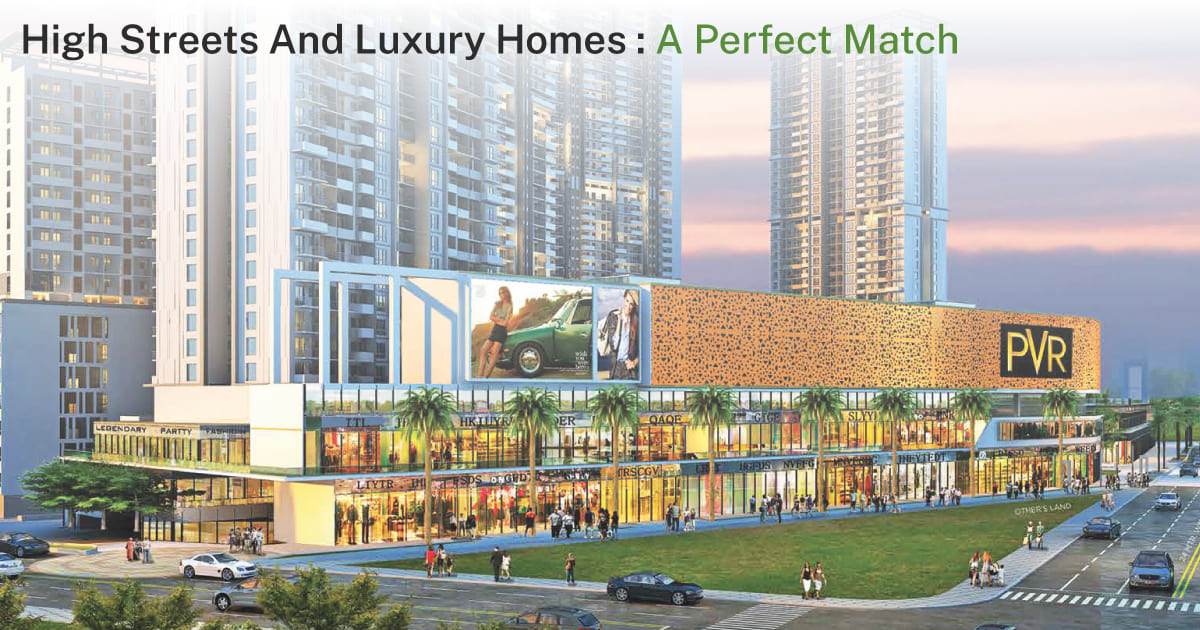
High Streets and Luxury Homes: A Perfect Match
In a report by a leading real estate industry expert, the luxury housing sector registered a 130 percent year-over-y increase in the January to June period of 2023 in the top 7 cities of India. The number of units sold in the same period also increased by 3,900 units in the same period in these cities. The demand for luxury housing is driven by various propelling factors, both macro and microeconomic, as well as social.
For instance, the global pandemic in 2020–22 significantly impacted housing trends in the country. With the majority of the population relegated to their homes and a shift to remote or hybrid work, many across the country realised the importance of spacious homes with an array of amenities. Furthermore, these homes catering to a rising middle class with aspirations of an elevated lifestyle are also considerably safer, a concern that has been at the forefront of every citizen in the aftermath of the pandemic.
Another reason why we are encountering a surge in demand for luxury development is the rising disposable income of the middle class, which has a desire to match their abodes to their aspirations of a high lifestyle. This demand has led to developers curating architectural marvels designed to grant this new rising class unique living experiences that have become a quintessential symbol of their privileged status.
Renaissance of High Street
However, one interesting trend has been noticed by developers across the country in recent times. This is the demand for luxurious high streets as an integral part of new-age urban communities. This can be attributed to these affluent residents seeking convenient access to what is increasingly being considered as everyday luxuries for them. From the best restaurants to retail stores and other recreational luxury experiences, the residents living in luxury properties consider these facilities to be every bit as important as the design of their new, opulent homes.
Long considered the heart and soul of modern metropolises, these commercial centres have undergone significant change in recent decades. While the onslaught of forces such as online shopping, malls, etc. led to a period of decline in the popularity of high streets, the sector is experiencing a renaissance in the contemporary marketscape, fueled by the skyrocketing popularity of the luxury housing segment. Therefore, with rising demand for luxury homes, a proportional rise in demand for high-streets is also being witnessed across the country.
A Burgeoning Economic Realm
The presence of high streets in the vicinity of luxury homes forms a very compelling and mutually beneficial relationship for these two real estate assets. While the presence of these amenities in proximity to residential real estate makes the latter a prime asset in a sought-after location, it also provides the commercial project owners with a guaranteed customer base. This increased footfall leads to the creation of a thriving economic catchment, attracting more businesses to the area and driving the prices of residential properties in the area, thus creating a burgeoning real estate investment landscape.
Cultural and Social Hub
In today’s ultra-busy modern world, homes have become so much more than just a place to live. They have become a haven from the hustle and bustle of hectic lives, with residential communities becoming a nexus for like-minded individuals to come together and form lifelong bonds. Luxury residential communities help facilitate this human need for social interaction and bonding. This has given rise to developers furnishing these communities with social avenues such as parks, clubhouses, etc. Similarly, high streets in communities help foster bonds with neighbours, cultivating a sense of belonging and community.
Final Thoughts
As industry pundits predict, the relationship between the luxury housing segment and the high street is poised to grow even stronger in the near future. From the economic appeal of creating these mixed-use neighbourhoods to the enhanced aesthetic appeal these developments grant to luxury residences, the benefits of creating such townships are unparalleled. Masquerading as economic centres, these spaces form the perfect nexus of social interaction. As cities seek to promote walkability and sustainability, the revival of high streets through luxury housing is expected to become a more common and successful approach. So the next time you are looking to invest in a residential property, remember that when you invest in a luxury residential property with a high street in the community, you’re not just buying a home; you’re buying into a lifestyle.



